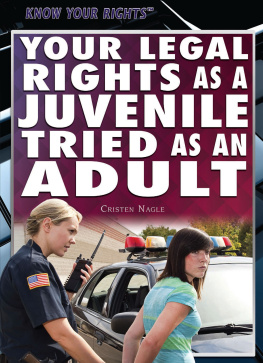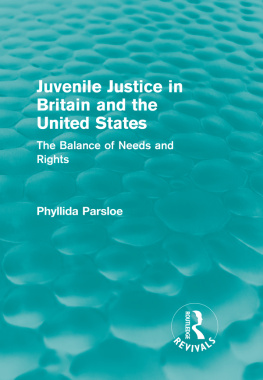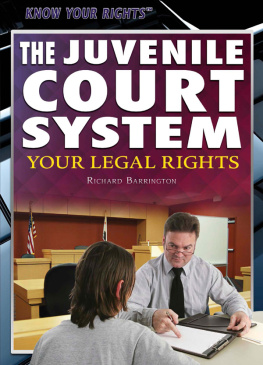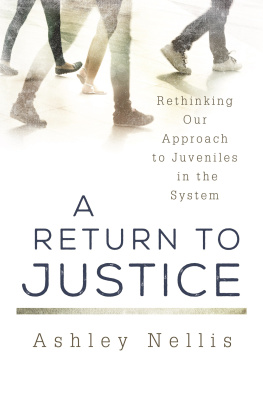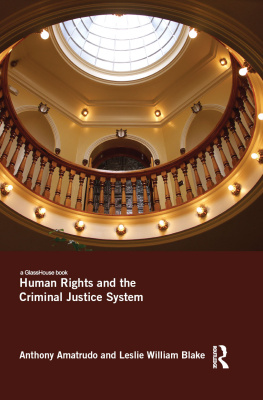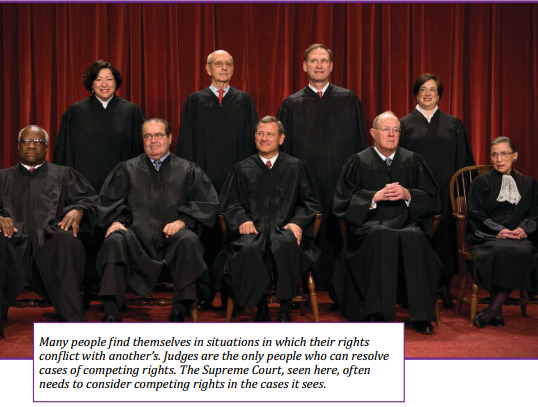Published in 2015 by The Rosen Publishing Group, Inc. 29 East 21st Street, New York, NY 10010
Copyright 2015 by The Rosen Publishing Group, Inc.
First Edition
All rights reserved. No part of this book may be reproduced in any form without permission in writing from the publisher, except by a reviewer.
Expert Reviewer: Lindsay A. Lewis, Esq.
Library of Congress Cataloging-in-Publication Data
Nagle, Cristen, author.
Your legal rights as a juvenile being tried as an adult/Cristen Nagle. First Edition.
pages cm.(Know your rights)
Includes bibliographical references and index.
ISBN 978-1-4777-8016-9 (library bound)ISBN 978-1-4777-8017-6 (pbk.)ISBN 978-1-4777-8018-3 (6-pack)
1. Juvenile justice, Administration ofUnited StatesJuvenile literature. 2. Juvenile courtsUnited StatesJuvenile literature.
I. Title.
KF9779.N34 2015 345.7308dc23
2014021709
Manufactured in the United States of America

E very American has rights. One of the most important is liberty. This is the right to walk, live, and breathe wherever you want. The Constitution gives Americans certain rights to keep the government from taking away or limiting their liberty. These are called constitutional rights.
However, the American justice system does place some limits on citizens' liberties. The justice system is made up of police, courts, and prisons. It catches and punishes people who break the law. People's constitutional rights protect them against abuses within this system and guarantee their fair treatment under the law. Constitutional rights are the best protection from the justice system, so people need to know what those rights are. They have to know what their rights mean and understand the system in order to use them at the right time.
Consider the following scenario: John is walking down the street when he sees a laptop sitting in an open window. Nobody is around, so he reaches through the window and picks it up. He slips it into his backpack and continues down the street. The laptop's owner, Anthony, reports the theft to a police officer. As the officer is leaving Anthony's home, she passes John in a park. On a hunch, she picks up the backpack sitting a few feet away from him. She unzips the backpack, looks inside, and sees the laptop. John is arrested and confesses to taking the laptop.
When his case goes to trial, he is convicted of larceny and sentenced to thirty days in prison.
What John didn't realize is that the officer violated his constitutional rights by searching his bag on no more than a hunch. The officer's search was not allowed by the Constitution. The government could not use the fact that the officer found the laptop in John's backpack to prove that he was guilty of larceny. If John had not confessed, he could have walked away a free man. However, he did not know his rights.

It is especially important for minorsthose under eighteen years oldto know their rights because they can be tried as adults in some cases. The United States has one Justice system that was set up to deal with adults and another that was set up to deal with minors. The adult system is called the criminal Justice system. The system for minors is the Juvenile-Justice system. It was set up to take into account the facts that minors are not fully developed and their behavior tends to be more malleable, or easily influenced. The Juvenile Justice system is designed not Just to punish, but also to guide and support minors who have broken the law. However, minors can be tried in either system. This means that they need to understand how both systems work. For example, the penalties in the criminal-Justice system are generally more severe than those in the Juvenile-Justice system. The difference between the two systems can be the difference between being free to live a normal, productive life and being saddled with an adult conviction on your permanent record.
This book will help minors understand the criminal-and Juvenile-Justice systems, as well as the differences between them. It can help minors who are, or may someday find themselves, in trouble with the law understand who decides how they will be treated and how that decision is made. Minors armed with this knowledge are better prepared to exercise their rights and keep their liberty.
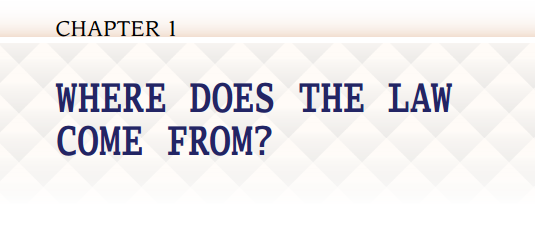
T he United States Constitution is the document that created the American government and gives all the people in the government their power. The Constitution allows the government to pass laws, which are rules that everyone must follow. Laws say what people can and can't do and set a punishment for people who break them. Laws are not allowed to be unconstitutional, or contradict the Constitution. The Constitution has twenty-seven amendments, or additions that have been added over the years. The Bill of Rights is the first ten amendments, or additions, to the Constitution. It gives Americans key rights that the government can never take away. Every state also has its own state constitution. At the very least, a state must grant its residents the same rights guaranteed under the U.S. Constitution. However, many states provide for extra rights and protections that go beyond those in the U.S. Constitution.
The U.S. Constitution creates the three branches of the federal government: the executive branch, the legislative branch, and the judicial branch. The executive branch is responsible for enforcing the laws of the land. The legislative branch passes laws. The judicial branch is responsible for figuring out what the laws mean and whether they are constitutional. Courts can't make laws. However, they can decide whether the government has acted improperly under the law or misinterpreted a law. The Supreme Court can also declare laws unconstitutional. The Constitution says that all three branches of government must be equal, so no branch is more powerful than the others.
THE COURT SYSTEM
The court system is made up of three court levels. The first level is a trial court, where innocence or guilt is decided. The middle level is an appeals court, which looks at what happened at the trial court and decides whether there were any mistakes. The third level is a higher appeals court, which looks at what both lower courts did. Federal trial courts are called district courts. Midlevel federal courts are called circuit courts of appeal, and the highest-level federal court is the United States Supreme Court.
THE LAYERS OF GOVERNMENT
Government in the United States has three layers. They are the governments, federal governments, state governments, and local governments. The highest is the federal government, which includes the president, Congress, and the U.S. Supreme Court. Under the Supreme Court in the Judicial branch are circuit courts of appeal and district courts. Every federal court has power over the whole federal government. A district court can undo something the president does if it is unconstitutional.

